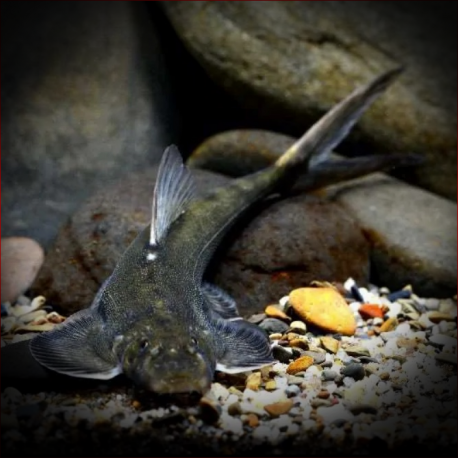More info
Datasheet
| Minimum Tank Size | 80 litres / 21.13 US gallons |
| Maximum Size | 7.5cm / 2.95inches |
| Temperature | 20°C / 68.00°F - 24°C / 75.20°F |
| Hardness | 1.01dgH / 18ppm - 10.03dgH / 179ppm |
| pH | 6.0-7.5 |
General Description
Jinshaia Sinensis, also known as Psilorhynchus sinensis or Hemimyzon sinensis, is a species classified under the family Balitoridae. Endemic to the Yangtze river system in China, specifically the Jinsha river basin, this fish has specialized morphology suited for life in fast-flowing waters, with the ability to cling to solid surfaces using a powerful sucking cup-like structure. The species is typically around 7.5cm in size and is yet to be widely seen in the aquarium trade outside its native country.
Aquarium Setup
To successfully maintain Jinshaia Sinensis in captivity, it is crucial to replicate its natural habitat in the aquarium setup. A substrate of gravel and sand, along with water-worn rocks and boulders, should be provided to mimic riffles and rapids. While most aquatic plants struggle in this environment, sturdy species like Microsorum and Anubias can be attached to decor for grazing. Clean water with high oxygen levels is essential, necessitating the use of robust filtration and potential additional water movement sources. The aquarium should maintain stable water conditions and a biofilm for the well-being of the fish.
Behaviour
Jinshaia Sinensis is generally peaceful, but its environmental requirements limit the selection of suitable tankmates. It may coexist well with species like Barilius, Devario, and certain Rasbora and catfish types. While details on its ecological behavior are scarce, related species tend to form groups, suggesting that acquiring a small school of around six individuals is advisable if available.
Feeding and Diet
In its natural habitat, Jinshaia Sinensis likely feeds on benthic algae and micro-organisms from solid surfaces. In captivity, it accepts a varied diet including quality dried foods, live or frozen bloodworms, and homemade gelatin-bound mixtures rich in fresh vegetables and Spirulina. Providing algae-covered surfaces in the aquarium is vital for long-term success, with options to cultivate algae separately if needed.
Reproduction & Dimorphism
While presumed to be a seasonal spawner in the wild, there are no recorded observations of reproduction in aquarium settings. Sexually mature females may exhibit slight differences in size and body fullness compared to males.
Habitat and Distribution
Preferring swiftly-flowing streams with clear, oxygen-rich water, Jinshaia Sinensis typically occupies riffles, runs, and cascades in the Jinsha river basin. The substrate consists of gravel, rocks, and biofilm-covered solid surfaces, with sparse aquatic plant presence and well-developed riparian vegetation. The species is unique among balitorids as a purported strong swimmer despite inhabiting high-gradient streams.

